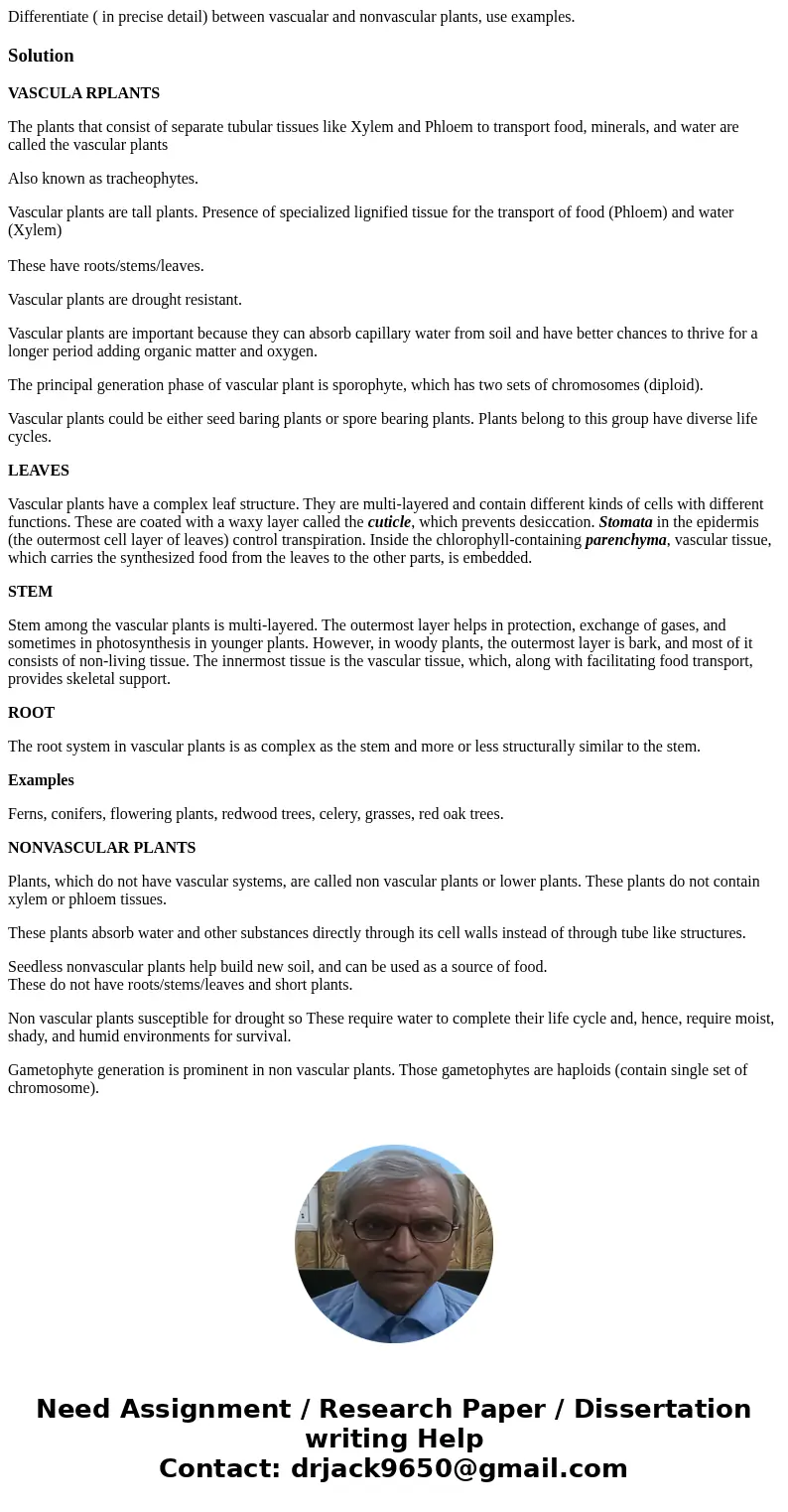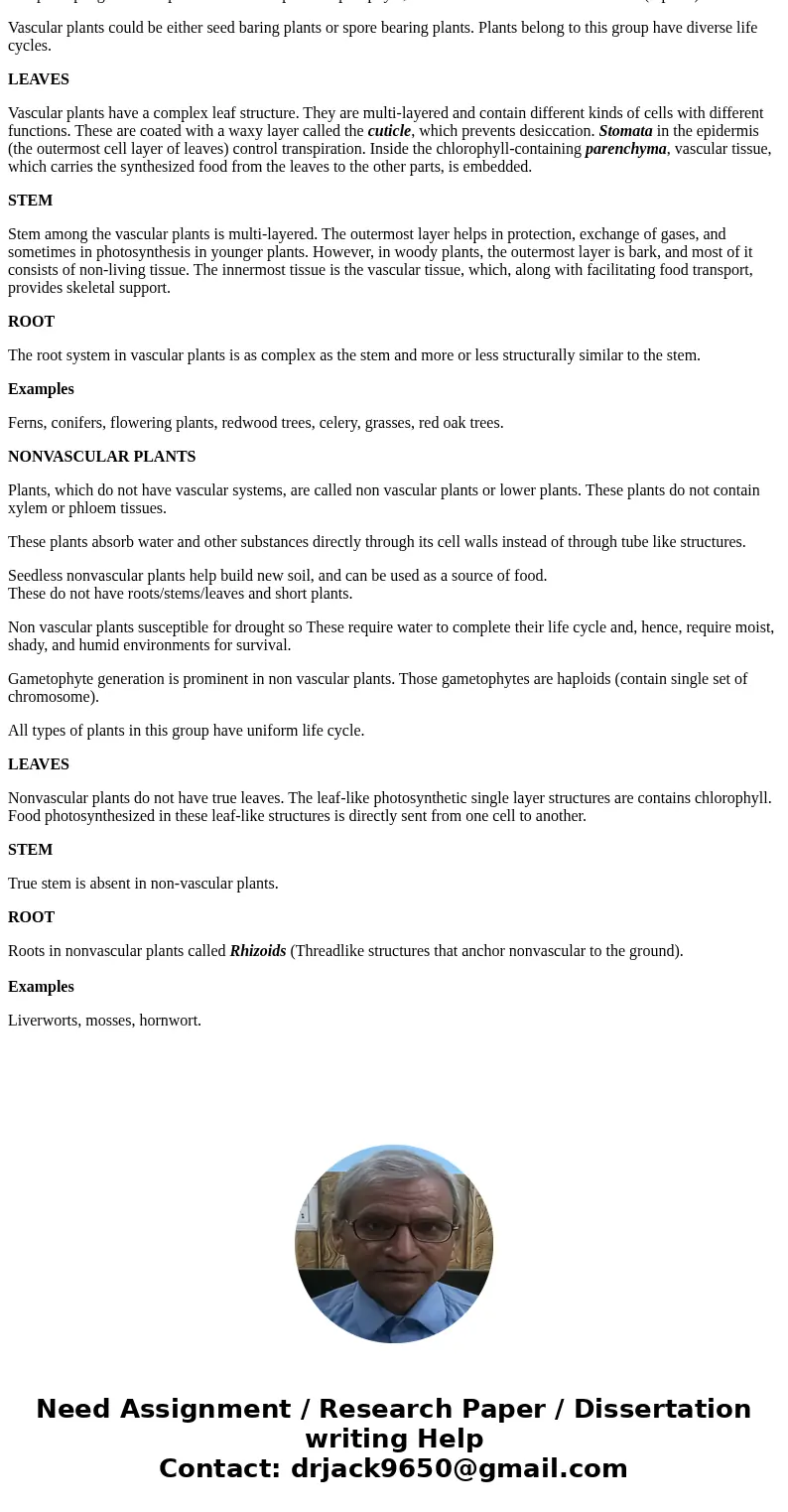Differentiate in precise detail between vascualar and nonva
Differentiate ( in precise detail) between vascualar and nonvascular plants, use examples.
Solution
VASCULA RPLANTS
The plants that consist of separate tubular tissues like Xylem and Phloem to transport food, minerals, and water are called the vascular plants
Also known as tracheophytes.
Vascular plants are tall plants. Presence of specialized lignified tissue for the transport of food (Phloem) and water (Xylem)
These have roots/stems/leaves.
Vascular plants are drought resistant.
Vascular plants are important because they can absorb capillary water from soil and have better chances to thrive for a longer period adding organic matter and oxygen.
The principal generation phase of vascular plant is sporophyte, which has two sets of chromosomes (diploid).
Vascular plants could be either seed baring plants or spore bearing plants. Plants belong to this group have diverse life cycles.
LEAVES
Vascular plants have a complex leaf structure. They are multi-layered and contain different kinds of cells with different functions. These are coated with a waxy layer called the cuticle, which prevents desiccation. Stomata in the epidermis (the outermost cell layer of leaves) control transpiration. Inside the chlorophyll-containing parenchyma, vascular tissue, which carries the synthesized food from the leaves to the other parts, is embedded.
STEM
Stem among the vascular plants is multi-layered. The outermost layer helps in protection, exchange of gases, and sometimes in photosynthesis in younger plants. However, in woody plants, the outermost layer is bark, and most of it consists of non-living tissue. The innermost tissue is the vascular tissue, which, along with facilitating food transport, provides skeletal support.
ROOT
The root system in vascular plants is as complex as the stem and more or less structurally similar to the stem.
Examples
Ferns, conifers, flowering plants, redwood trees, celery, grasses, red oak trees.
NONVASCULAR PLANTS
Plants, which do not have vascular systems, are called non vascular plants or lower plants. These plants do not contain xylem or phloem tissues.
These plants absorb water and other substances directly through its cell walls instead of through tube like structures.
Seedless nonvascular plants help build new soil, and can be used as a source of food.
These do not have roots/stems/leaves and short plants.
Non vascular plants susceptible for drought so These require water to complete their life cycle and, hence, require moist, shady, and humid environments for survival.
Gametophyte generation is prominent in non vascular plants. Those gametophytes are haploids (contain single set of chromosome).
All types of plants in this group have uniform life cycle.
LEAVES
Nonvascular plants do not have true leaves. The leaf-like photosynthetic single layer structures are contains chlorophyll. Food photosynthesized in these leaf-like structures is directly sent from one cell to another.
STEM
True stem is absent in non-vascular plants.
ROOT
Roots in nonvascular plants called Rhizoids (Threadlike structures that anchor nonvascular to the ground).
Examples
Liverworts, mosses, hornwort.


 Homework Sourse
Homework Sourse